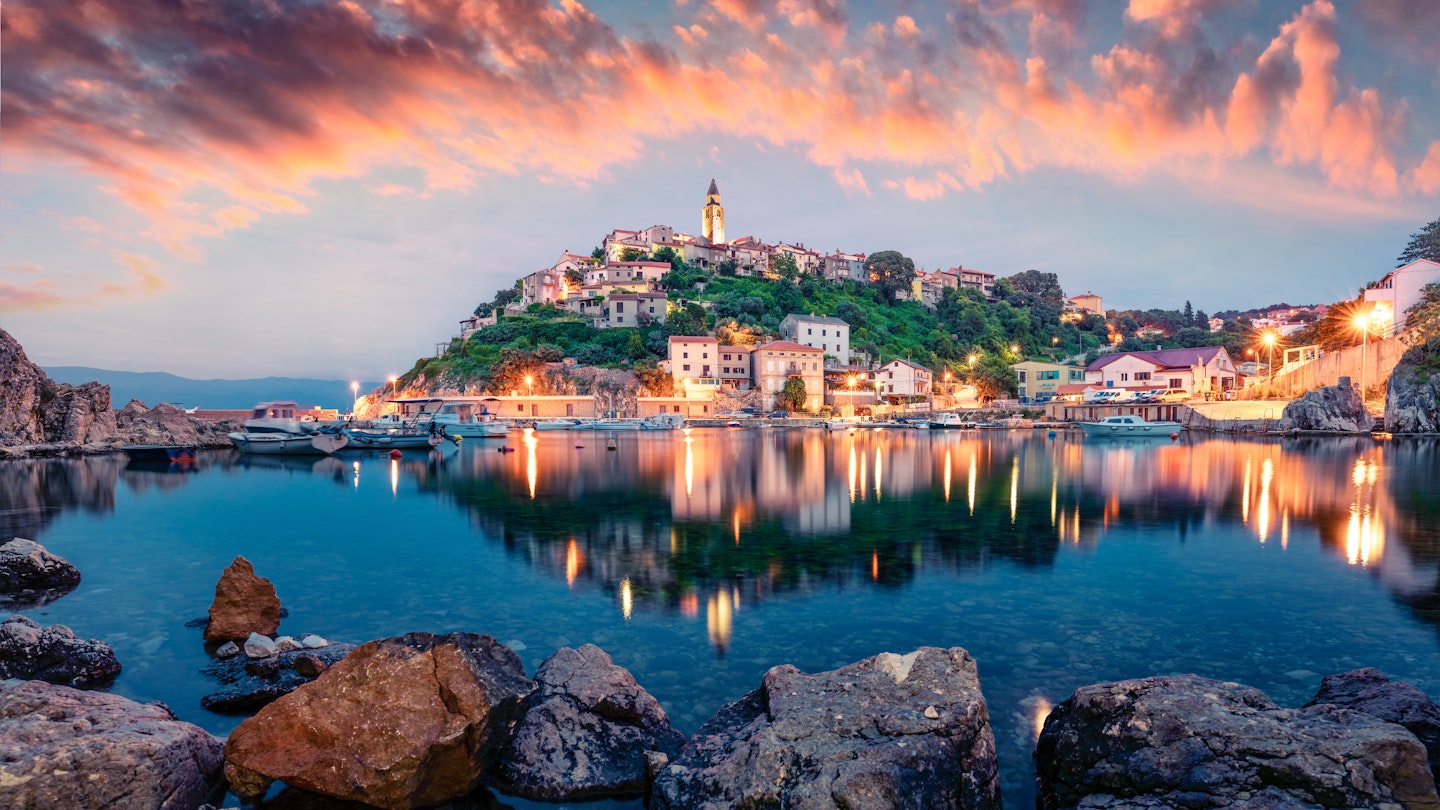Kvarner Islands: A Natural Paradise in Croatia
With the northern coast’s gateway city, Rijeka, named as European Capital of Culture for 2020, it’s time for the Kvarner islands to take centre stage in Croatia. You don’t need to book a pricey cruise or charter a yacht to visit this compact cluster of emerald isles, nestled in the gulf between the Istria peninsula and the mainland’s rugged Velebit mountain range. Just jump on a ferry in Rijeka and island hop away.
Relax and De-stress on Rab Island
From Rijeka, it’s less than two hours by fast ferry to historic Rab Town on the island of Rab. The prettiest of the gulf’s many historic walled towns, Rab’s skyline is enhanced by four church towers rising majestically from its ridge of ancient stone streets.
There are numerous pebbly bays scattered all around the island, with sandy beaches congregated at the northern end, near the island’s second largest settlement, Lopar. Paradise Beach, in particular, is a magnet for young families, featuring warm, shallow waters lapping a bay lined with pine trees, ice cream parlours, and relaxed restaurants.
Rab also has a long history of naturism; England’s King Edward VIII and Wallis Simpson famously enjoyed a nudist experience here in 1936, and Sahara Beach remains a popular spot for those wishing to sunbathe without tan lines.
Explore Croatian History on Krk Island
In summer, there are up to four ferries a day from Lopar to Valbiska, the main port of Krk Island. Krk, the largest of Croatia’s islands along with neighbouring Cres, is also Croatia’s most easily accessible island due to Rijeka Airport at its northern end and a road bridge connecting it to the mainland. Consequently, its beaches are very popular with Central European holidaymakers in summertime.
The most popular beach resort is the long, graceful, mountain-backed crescent of Baška to the south. The small town’s many waterfront bars, cafes, and restaurants come alive to cater to the seasonal influx. However, there’s much more to Krk than its beaches; Krk Town still has sections of its Roman walls and gates, along with a 12th-century tower and an impressive Romanesque cathedral. In a nearby bay, thrill-seekers can enjoy a fixed wakeboarding and waterskiing cable system.
If you prefer your adventures on dry land, while enjoying a drink, head to the charming hilltop village of Vrbnik where you can sample the local white varietal žlahtina in atmospheric family-run cellars. Architecture, art, and history enthusiasts should visit the 16th-century Franciscan monastery on the islet of Košljun and St Lucy’s Church near Baška, which incorporates Roman masonry and features the earliest reference in the Croatian language to a Croatian king, written in Glagolitic script.
Get Back to Nature on Cres Island
From Krk, hop over to Cres – the regular car ferries take just 25 minutes. Long, lovely Cres stretches out at the north of the gulf, shrouded in forest, offering a more rustic vibe than its busier counterpart. It’s renowned for its secluded coves and remote hilltop villages such as Lubenice and Beli, the latter of which hosts a rescue centre for Griffon vultures.
Down by the seaside, Cres Town resembles a slice of Venice, with a sunny promenade and an impressive collection of Renaissance houses and churches nestled behind its historic walls. Even more enchanting is tiny walled Osor, a virtual museum of 15th-century streetscapes, punctuated by modern sculptures. Classical music reverberates through the streets on summer nights when Osor Musical Evenings are staged on the main square and in the beautiful Church of the Assumption.
Experience Flora and Fauna on Lošinj Island
An 11m canal is all that separates Cres from Lošinj, with the walls of Osor guarding the bridge between the two. On Lošinj, the action centres around the twin Venetian-era towns of Mali Lošinj and Veli Lošinj near the middle of the island. Although mali means ‘small’ and veli means ‘big’, Mali Lošinj is the larger of the two, its long harbour lined with grand homes built for 19th-century ship captains. Veli Lošinj has more modest dwellings in the pastel hues typical of an Adriatic fishing village.
Budding botanists will be thrilled here; the island of Lošinj is lush with flora. Both Mali and Veli Lošinj are surrounded by dense pine forests with various greenery. The island hosts 1100 plant species, 230 medicinal herbs, and diverse specimens like lemon, banana, cedar, and eucalyptus, brought by sea captains centuries ago.
Moreover, the beaches here are a significant attraction. Large resort-style hotels have emerged above pebbly Sunčana and Čikat bays, joining the grand holiday villas built for the Austro-Hungarian elite at the turn of the 20th century. Between the beach bars lining the waterfront are reliable operators offering diving, windsurfing, sailing, kayaking, and cycling excursions.
Day Trip to Susak, Ilovik, and Unije Islands
For a complete change of pace, take a boat from Mali Lošinj to explore the sparsely populated isles scattered around Lošinj Island. Susak is known for its sandy beaches, unusual dialect, and bright tutu-like skirts worn by women for weddings and feast days. Hilly Ilovik features lush, aromatic vegetation and sheltered coves, while Unije offers pebbly beaches and a picturesque fishing village comprised entirely of old stone houses.





